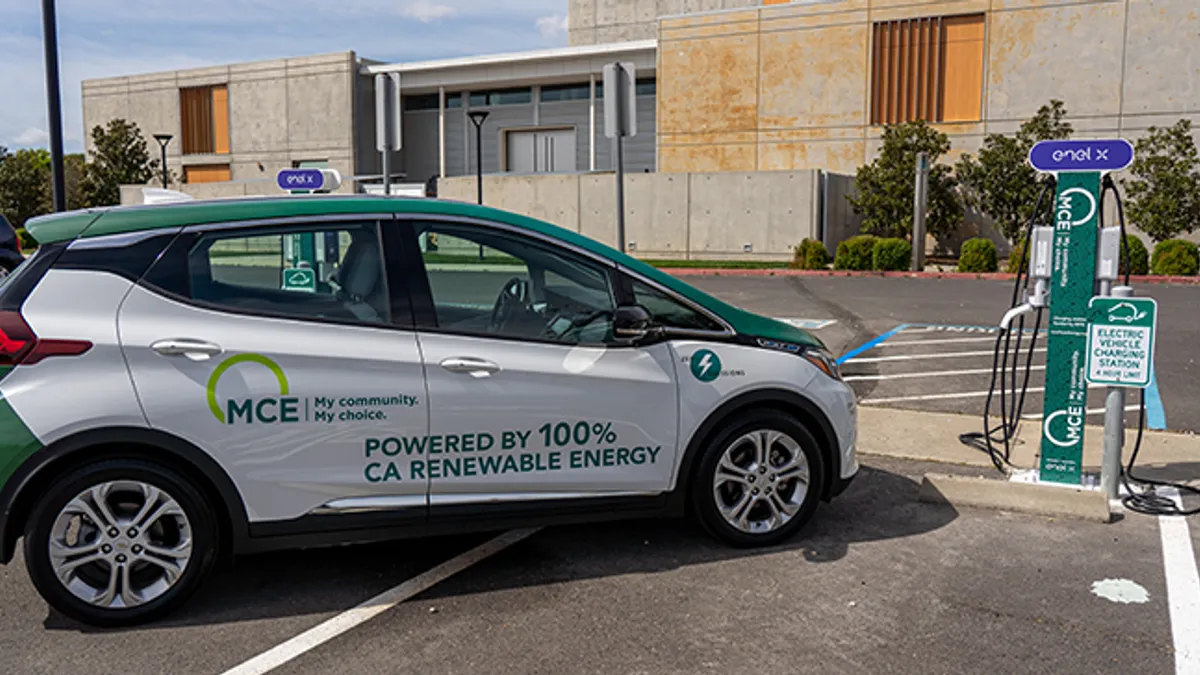Fossil fuels like coal, natural gas, and gasoline are responsible for air and water pollution that cause nearly 1 in 5 human deaths worldwide. The data is staggering and although California is making tremendous progress toward a 100% renewable electricity grid, over 50% of the state’s 2019 emissions are caused by transportation and the extraction of transportation-related fuels.
To cut these emissions and reach California’s goal of 5 million EVs on the road by 2030, 250,000 more charging stations are needed by 2025. MCE, a renewable electricity provider for more than 1.5 million people in the Bay Area, is supporting the rapid shift to clean powered EVs through an equity-centered lens.
Low-income communities and communities of color disproportionately feel the impacts of vehicle pollution and can benefit the most from the clean air and cost-saving benefits of EVs. Compared to gas vehicles, EVs save the average household $650/year. But the higher upfront cost keeps EVs out of reach for many.
In response, MCE allocated $1.4M in rebates for 400 income-qualified residents, reducing EV costs by up to $13,750 per vehicle when combined with other incentives. To help workplaces and multifamily properties which are lagging behind in EV adoption, MCE has provided rebates to install over 900 EV charging stations, with another 600 planned by next year. And thanks to a $4.3 million grant from the California Energy Commission for charging stations in low income zip codes, MCE and the Contra Costa Transportation Authority plan to install 785 more charging stations at multifamily properties, public workplaces, and commercial businesses in the next two years.
The dramatic increase in EVs and other electric technologies could increase the country’s energy needs by 38% by 2050 according to the U.S. Department of Energy. While electricity providers work to prepare for the increased demand, vehicle-to-grid integrated (VGI) technologies are also helping solve the problem. VGI enables smart EV charging, charging the batteries at the most efficient times, and can also provide power back to the grid.
MCE’s EV charging app, EV Sync, automatically shifts EV charging to times when energy is less expensive and more renewable, bolstering grid resiliency from outages during critical periods. EV Sync has shifted 93% of EV electricity usage away from the 4 p.m. — 9 p.m. peak, reduced carbon intensity by 55%, and saved users around $12/month on energy bills.
A transition to an equitable energy future must focus on increasing access to clean technology for all. With more than 44% of the Bay Area population renting, increasing access to public charging stations is an essential component of that. MCE’s programs promote both public charging access and equitable access to lower-income individuals who may benefit greatly from the decreased cost to operate an EV compared to a gas powered car but may have difficulty overcoming the upfront cost.
MCE’s programs are working. In fact, by the end of March 2022, our program exceeded market averages for purchases of full battery EVs compared to plug-in hybrids and owning compared to leasing. 75% of MCE program participants purchased full battery EVs compared to 64% across MCE’s service area, and 84% of participants own their vehicles compared to 48% across national new car purchases.
The power of an agency like MCE isn’t just in the ability to choose where its energy comes from. It’s the power to choose how its dollars are spent and prioritize communities over profits. MCE is reinvesting revenues in local community-benefit programs where it’s most needed, focusing on equity outcomes that support historically marginalized communities. Supporting local programs is one of the best ways we can build a brighter future for all.
Learn more about MCE at mceCleanEnergy.org or follow us on Facebook, Twitter, LinkedIn, and Instagram.










